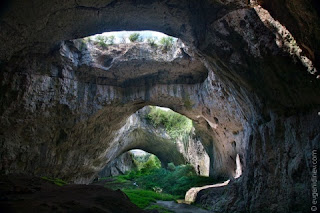 |
The Devetashka cave is considered to be one of the
most important
natural habitats of bats in Europe.
Photo by evgenidinev.com |
The bats inside Bulgarian Devetashka cave, a key spot for spending the winter season, have come out of hibernation much earlier than usual and it is unclear how many will survive until spring.
The conclusion was made by the Center for Bat Studies and Protection after a check of the cave.
Experts, cited by the TV channel bTV, say that all colonies are active at times they must be in hibernation over the noise and being disturbed during the recent filmingof Hollywood blockbuster "Expendables 2."
Several dead bats have been found inside the cave and the cause is in the process of being established.
The probe also revealed numerous tire marks, even in protected areas.
The environmentalists conclude the filming had been in violation of the law since under current legislation the cave can be used only for tourism and scientific research.
At the end of December, Nikolay Simov, a Bulgarian zoologist from the Center for Bat Studies and Protection at the Bulgarian Academy of Sciences, reported that the bat population in the Devetashka Cave has been reduced to 1/4, after the shooting of the movie.
"The shooting harms the bat habitat - with the placement of props, the cutting down of vegetation, as well as disturbance by the presence of large numbers of people and the noise they make," said Simov, pointing out the special check conducted after the session showed that at present there are some 8,000 inDevetashka Cave, while last year they were 30 000.
"What is even more alarming for us is that the legal regulations were not respected. The regional environmental inspectorate has no authority to give a permit for filmingin this protected area," the expert explained.
Simov added that the shooting was also in breach of the Agreement on the Conservation of Populations of European Bats.
Earlier in November environmentalists protested against the planned filming of "Expendables 2" in the cave, saying this will disturb and chase away the animals.
The coming of an all-star team, including Sylvester Stallone, Bruce Willis, Arnold Schwarzenegger, Chuck Norris, and others, has been a media sensation in Bulgaria.
At the same time, the Devetashka Cave in central northern Bulgaria, LovechRegion, is considered one of the most important bat habitats in Europe.
Source: Novinite

















 Dear Friends,
Dear Friends,

